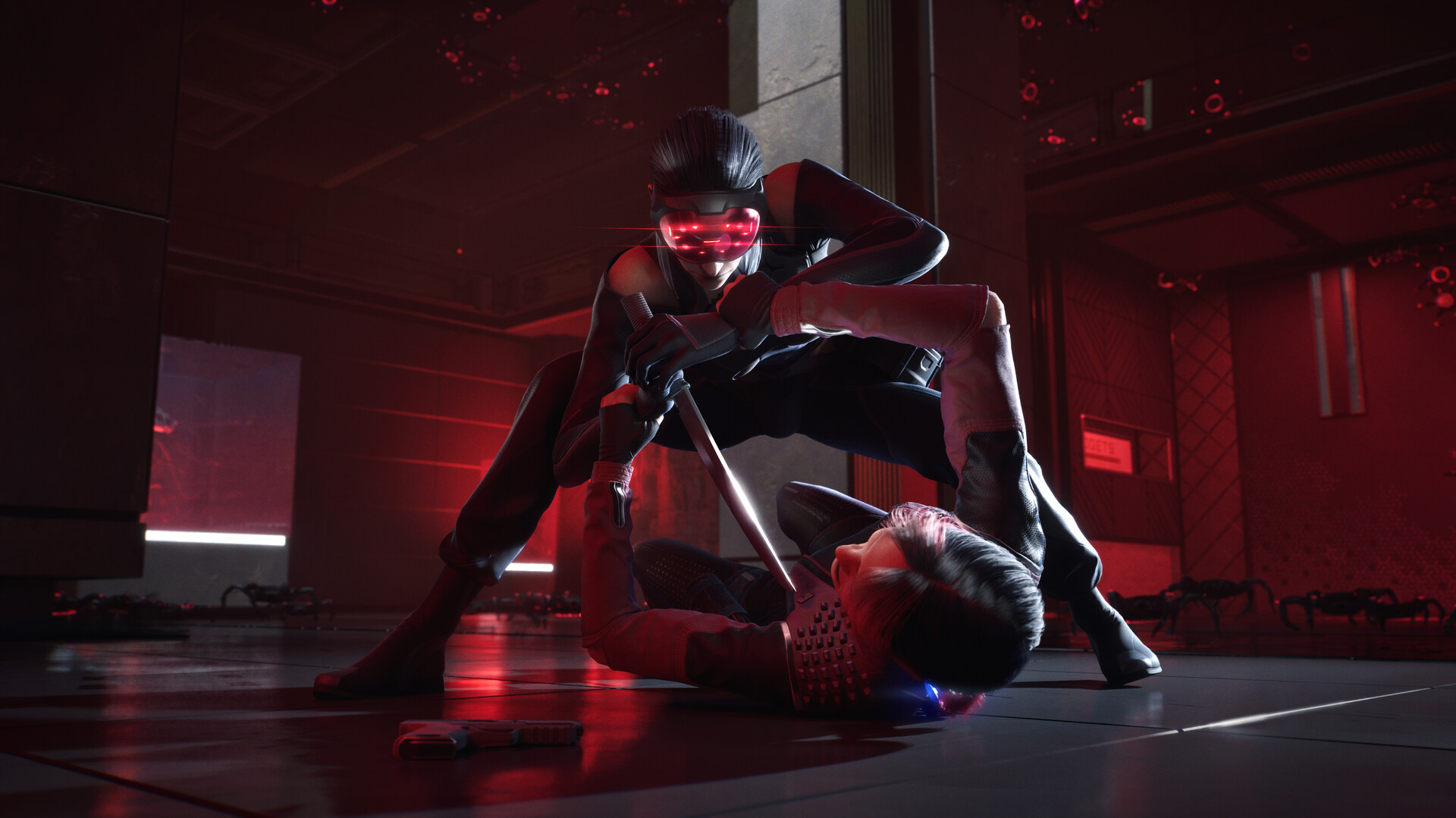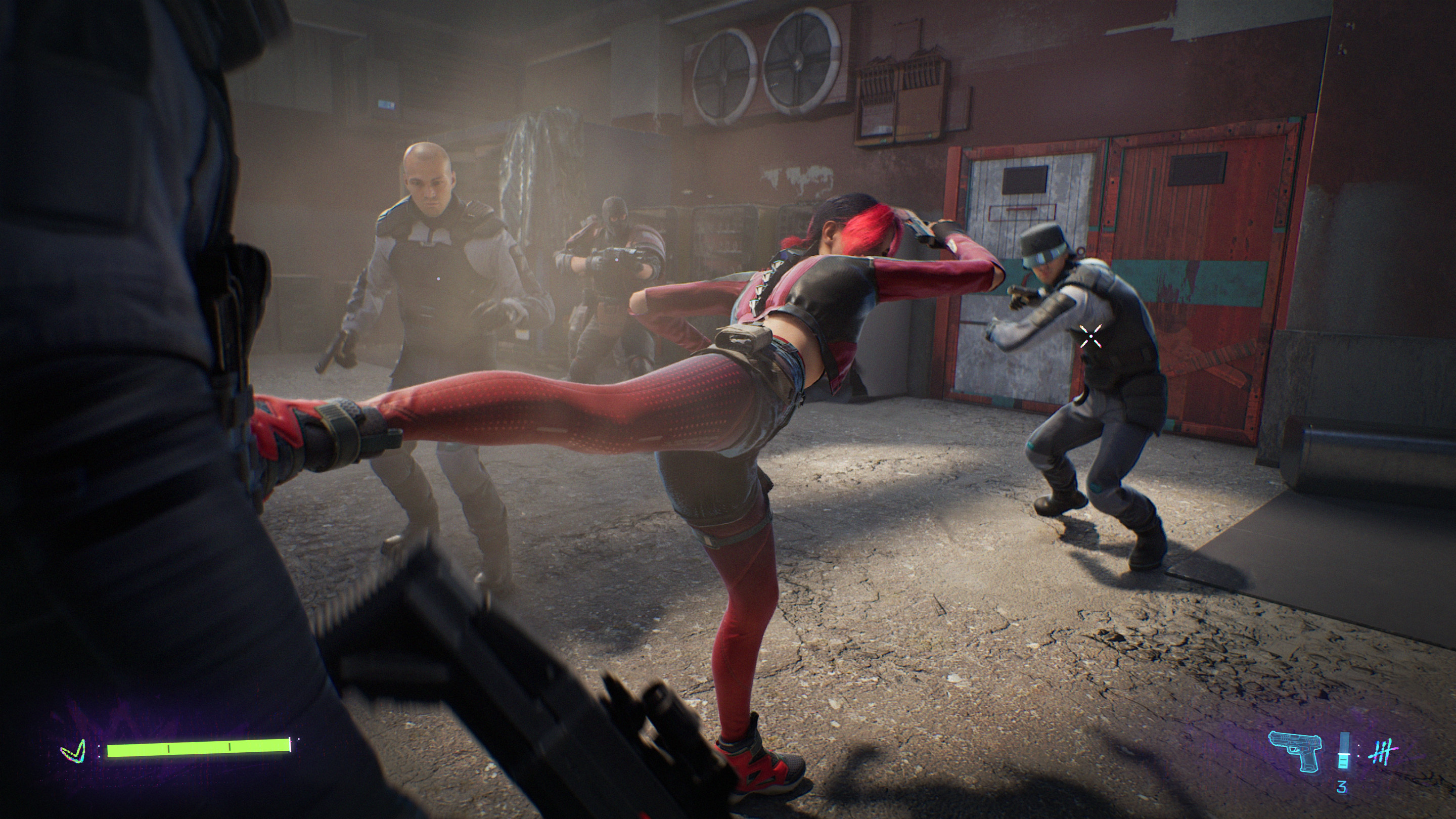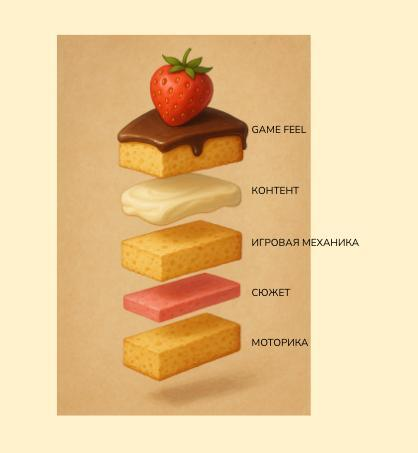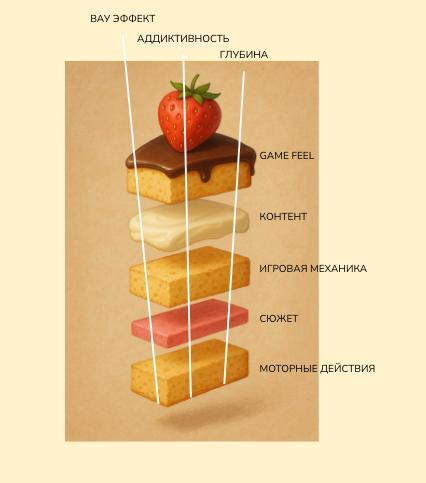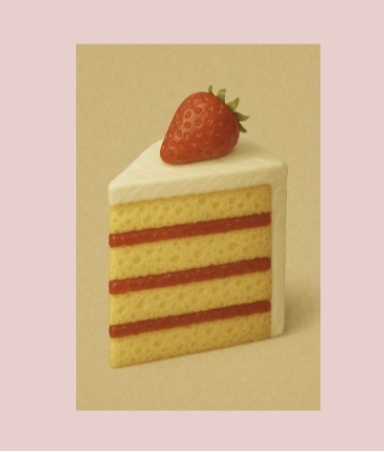Building a Foundation: What Makes an Interesting Game — Nekki's Column
Column by Dmitry Aborilov, Head of Core Game Design at Nekki. The central question of the article, which the author answers: how to make a game truly engaging.
SPINE
The author of the article is Dmitry Aborilov, Head of Core Game Design. Over recent years, he has worked on projects such as Shadow Fight Arena, SPINE, Ninja Party, as well as overseeing and producing teams within the studio. His key role is the transfer of expertise across projects, design reviews, and creating sustainable approaches to game development. This article is the result of numerous observations and practices he applies in daily work with teams and products.
Dmitry Aborilov
What makes a game genuinely captivating? Why do some products instantly evoke strong emotions, immediately engage, and literally attract attention, while others remain just "okay"?
The answer lies not only in striking graphics, cool mechanics, or a savvy production pipeline. It all starts with a properly laid, reliable, deeply felt foundation. This foundation is not about technology, but about perception, emotion, and internal response. Let's break down what it consists of, how we build it in practice, and why it really works.
Start with Fantasy
A great game begins with the player's fantasy. It's not a marketing term, but the essence of what the user wants to experience: being John Wick, learning kung fu, steering a ship, or being an underdog who triumphs against all odds.
It's not about genres or formulas. It's about the inner feeling: being someone or doing something you've dreamed of. And if a game doesn't offer to fulfill that fantasy, it doesn’t evoke emotions. And therefore, it doesn’t stick in memory.
Fantasy is the foundation upon which mechanics, visuals, and everything else are built.
How to choose a strong fantasy for a project? Check it against the following points:
- You feel and understand it yourself.
- It can be easily articulated and explained (this doesn't always happen immediately; sometimes it needs time).
- There are fans/demand for it.
- The fantasy lends itself to creating vivid emotions.
- It sustains the entire game (some fantasies are “memes” that work well in a game jam project but aren’t enough for a larger game).
- It is realizable, and you have sufficient resources.
Don’t divide the game prematurely into “it’s interesting because of the story” or “there will be cool graphics.” Find the fantasy; it's valuable on its own, irrespective of how it’s implemented.
How It Works in Practice
Let’s move from theory to real examples. How exactly does fantasy become the foundation for design? How does it turn into a feeling, mechanics, style, and memorable experience? Below are some cases where fantasy not only set the direction but defined the essence of the game.
Shadow Fight Arena: playing as bosses — a role change that gives an emotional response and a sense of power. It's an immediate boost — you’re no longer just a fighter; you become someone you used to struggle to defeat. It’s reinforced by visuals, scale, powerful effects, and unique moves that enhance the perception of one's power.
Shadow Fight Arena
SPINE: you are John Wick. The focus is not just on gun-fu but on the archetype: fast, precise, beautiful. Winning stylishly is key in this game. Cameras, slow-motion, fight choreography — everything is built around the feeling of elegant superiority. It’s a game where every move is like a scene from an action movie.
SPINE
Sifu: Is one lifetime enough to master kung fu? The fantasy is not about victory but about the journey and overcoming. Every fight is not just a level but a lesson. The game challenges the player to learn from mistakes, progress, and find rhythm. It supports the narrative of “mastery through pain,” where even losses feel like a step forward.
Sifu
In all these cases, designers build the game around this idea. Everything, from controls to graphics, works to make it easy for the player to feel within the fantasy.
How to Implement Fantasy? The Five Slice Approach
Fantasy itself is not yet a game. To make it a part of the gaming experience, it needs to be expanded into all key design elements. This is where we use the "slices" approach — different planes through which the player perceives and experiences the fantasy. This approach helps to better understand how exactly to implement fantasy in a product.
I typically rely on five slices.
- Story — plot, events, characters. Evokes emotions through narrative arcs. Even in action games, it can be a strong anchor.
- Content — narrative, visuals, sound. Things you want to look at and read — art, environment, visual ideas, flavor text.
- Game feel — how interactions feel. The joy of a hit, shot, press, even if it doesn’t change the game.
- Gameplay Mechanics — decisions, choices, winning/losing. Emotions from making decisions.
- Motor Skills — the pleasure of physically managing. Like in dancing, sports, or racing – when you feel like your muscles move correctly and help accomplish what you intend.
Usually, projects have all layers, but one of them is more important for the game’s fantasy. In some projects, visuals and atmosphere are at the forefront, while in others, it's the depth of choice and balance. Some games have all the magic in game feel, while others focus on motor skills and rhythm. The main thing is to determine which slices are crucial for your game and invest efforts in them.
It’s essential to highlight and execute it exceptionally well.
For example:
- for doom-like games – motor skills and game feel are essential;
- for slay-the-spire-like games – gameplay mechanics and content are critical;
- for SPINE, game feel and motor skills are crucial;
- for Shadow Fight 4 – content (quantity and quality of heroes) and gameplay mechanics are important;
- for To the Moon – the story is key.
It’s crucial to identify which layers are more important in your game. Once you determine the critical layers, it becomes significantly easier to make development decisions and find “where the project falls short.”
Three Bites — How to Check if a Game is Enjoyable?
So, you’ve chosen a strong fantasy and divided it into slices. Now, how do you determine if it’s enjoyable? After all, if each cake layer is prepared separately, it doesn’t necessarily mean the cake will taste good. You need to see how the layers blend and what flavor they create together.
To understand if the game works, I use three "bites" of the entire product:
- Wow-effect — is there a “wow”? It’s a moment of surprise, visual or emotional shock. A moment that you want to retell, show others, and return to. It can be in the first appearance of a boss, a sudden change of scenery, an unusual animation, or simply the feeling of "wow, I really did that."
- Addictiveness — do you want to repeat the actions? It’s that feeling when you enjoy every new attempt: jumping, hitting, shooting, dodging. It’s important not just that the player can repeat but to want to do it again and again because each repetition brings micro-satisfaction. This is especially noticeable in games with short gameplay cycles that happen quickly and offer immediate feedback.
- Depth — is it interesting to dig deeper and learn? This is not about now but about later. Is there room for growth in the game? Do you want to understand what lies beneath the surface, master the system, discover hidden mechanics, explore characters, read the lore, experiment? Depth is what turns a game from an evening pastime into a hobby that lasts months.
If at least one "bite" works — it's already a signal that the game can touch a nerve, captivate, become someone’s go-to game. If all three work — you don’t just have a game; you have a chance for a genuine audience love affair.
If some bites don’t resonate, analysis is needed. Typically, the game’s taste falters due to the following issues:
- a missing layer;
- an unfinished critical layer for the project;
- forgetting about the wow-effect. Each layer is good, but everything is too uniform;
- overdoing the difficulty;
- dominant (optimal) strategies exist that cannibalize gameplay.
Checking the Game's Pace
There’s another reason why a game may be unsatisfying, even if all layers are good and the three bites are successful. The reason is a poorly adjusted game pace.
This topic deserves a separate big article, but if a player, within the core cycle, constantly encounters similar events, sees no significant difference between them, or the cycle is just too monotonous or prolonged, the game becomes boring.
In my work practice, I check three time intervals in a game to evaluate its pace:
- 10-30 seconds (how interesting the moment is in a fight or other action, how much variety there is, whether there are wow moments and boring parts);
- 10-30 minutes (what events occur, is the experience varied enough);
- 4-6 hours or the entire game if it has an ending.
Picking the right game pace is very challenging. What can help?
- analyzing the components’ pace individually (story pace, content pace, introduction of new mechanics, etc.);
- actively reviewing references and studying how pace is structured in them.
By the way, game pace is accelerating each year. Games from the 2010s are noticeably slower than modern ones. It's likely better to plan for a faster pace now to ensure the game appears contemporary by release.
Final Assembling of the Foundation
So, what constitutes a solid game foundation?
- Fantasy — vivid, comprehensible, emotional. It’s not just an idea; it’s the inner impulse for which the player launches the game. It should strike directly at the heart, be recognizable, and immediately evoke a “I want to try this!” A good fantasy is like a storyline in the player's mind even before they see the first frame.
- Slices — smartly distributed realization across key aspects. Fantasy needs materialization: through story, content, game feel, gameplay mechanics, and motor skills. Slices help identify what exactly in the game should excel for the fantasy to flourish. They provide the structure, turning an abstract idea into a systematic, functioning game.
- Bites — checking for wow-effect, addictiveness, and depth. This is the moment of truth. The wow-effect, joy from interaction, the desire to explore further — if at least one “bite” works, it means the game can captivate. If all three succeed — it’s almost a guarantee that the product will be loved and remembered.
- Pace — dynamics that keep attention and prevent boredom. Good pace is the alternation of tension and relaxation, unexpected peaks, and calm plateaus. It makes the game “alive” and keeps the controller in your hands.
When all these elements come together, the game becomes truly enjoyable, multi-layered, emotionally rich, and deeply memorable. Such a game is one you want to return to and recommend to others.
The key is not to build a game in isolation from the player but to shape it around their desire to experience something extraordinary. This is the foundation of a strong game.
